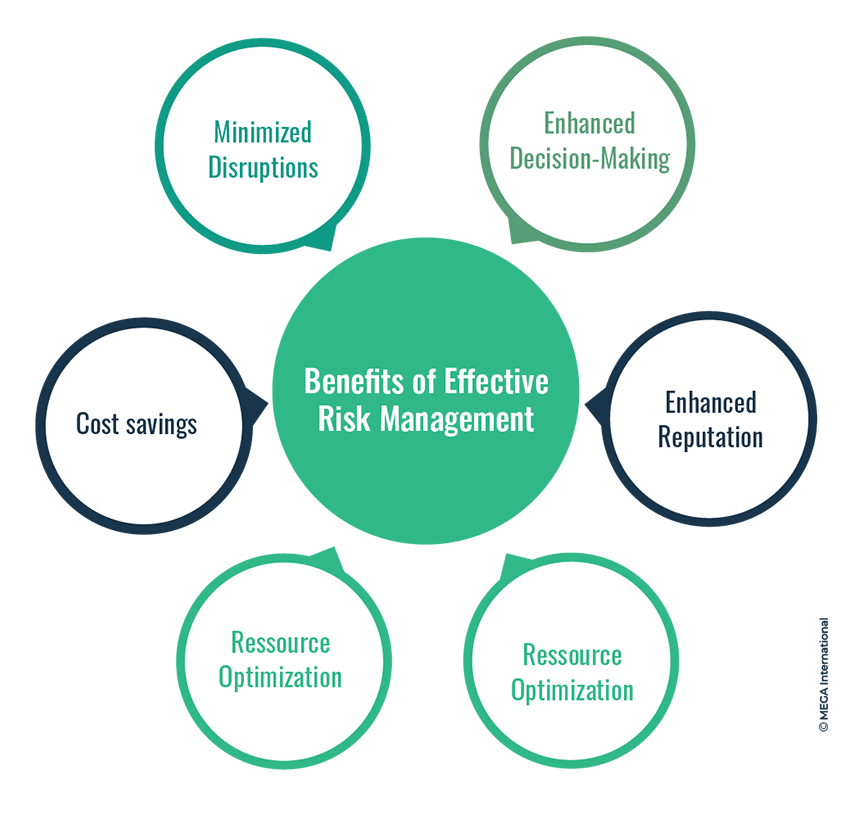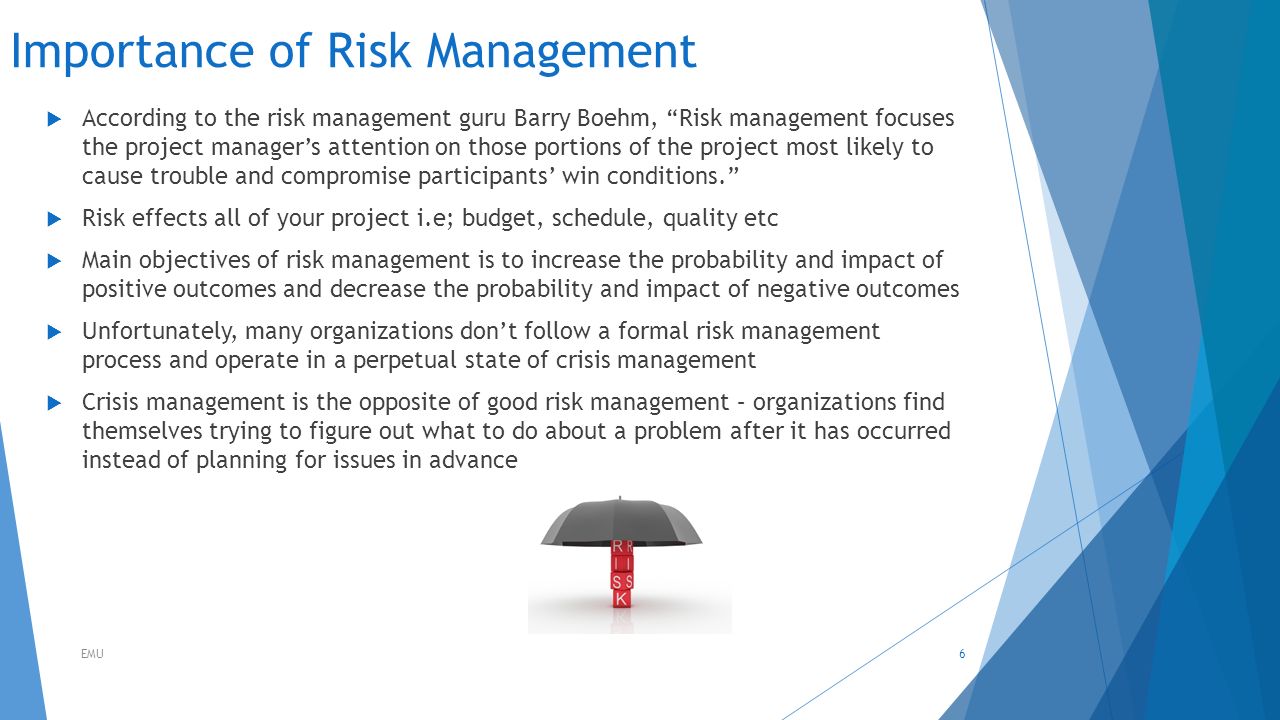How the Importance of Risk Management Facilitates Successful Project Outcomes
How the Importance of Risk Management Facilitates Successful Project Outcomes
Blog Article
The Essential Significance of Risk Management in Achieving Organizational Goals
In the swiftly progressing company landscape, the capacity to browse unpredictability has become an essential. This is where Risk Management actions in, providing an organized strategy to identifying, assessing, and mitigating prospective roadblocks to advance. It's even more than just a safety procedure - it's a strategic tool, cultivating resilience and innovation. As we check out the essential function of Risk Management in achieving business goals, one can't help but ask yourself: how does this equate right into real-world success?
Comprehending the Idea of Risk Management in Business

The Integral Role of Risk Management in Strategic Planning
Incorporating Risk Management right into tactical preparation functions as a safeguard for companies, securing their long-term strategies with a solid structure of readiness and durability. It operates as the company's radar, discovering potential risks and vulnerabilities that might disrupt the course in the direction of achieving their specified objectives. Risk Management offers a structure for anticipating unpredictabilities and designing appropriate feedbacks, making sure the company's survival and prosperity even when faced with hardship. By integrating Risk Management right into calculated planning, organizations can transform these unpredictabilities into possibilities for growth and technology. This critical interweaving of Risk Management fosters versatility, making organizations much more durable and allowing them to browse the ever-changing company landscape with confidence. As a result, Risk Management comes to be an important device in critical preparation, critical in protecting lasting success.

Methods for Identifying, Assessing, and Prioritizing Threats
The process begins with Risk recognition, utilizing devices such as SWOT analysis, which aids in pinpointing prospective risks and possibilities. Next off, Risk evaluation is carried out to establish the possible impact and likelihood of each Risk. Risks are focused on based on their possible impact and possibility, enabling companies to focus their resources on critical dangers.
Safeguarding Business Procedures Via Effective Risk Management
In the business landscape stuffed with uncertainties, reliable Risk Management plays a crucial function in securing business procedures. By recognizing and evaluating potential hazards, Risk Management makes it possible for organizations to develop durable contingency strategies. Organizations must invest in detailed Risk Management methods to guard their procedures.

Converting Possible Hazards to Opportunities: The Power of Risk Management
While potential risks could originally look like barricades to business success, effective Risk Management can change them right into possibilities. A positive technique to risk Management entails identifying, analyzing, and focusing on threats to design methods that turn them right into possible advantages. This process requires helpful hints the advancement of a risk-aware society within the company, urging people to watch threats as possible stimulants for change and growth, instead than simple hazards. importance of risk management. Via this lens, potential threats become chances to introduce, boost processes, and enhance durability. Therefore, by leveraging the power of Risk Management, companies can not just protect their procedures but also spur growth and attain their objectives in an unpredictable organization atmosphere.
Situation Studies: Success Stories of Risk Management Driving Company Objectives
Successful execution of Risk Management strategies has actually yielded remarkable outcomes in various businesses, underscoring the advantages of this approach. International business like Microsoft and Google, for circumstances, have leveraged Risk Management to reduce hazards and manipulate opportunities, driving their business goals forward. These instances illustrate exactly how effective Risk Management can not only guide companies clear of prospective risks however likewise direct them in the direction of their strategic purposes.
Conclusion
To conclude, Risk Management is essentially critical in attaining business goals. It offers an organized strategy to recognizing, evaluating, and resolving prospective dangers and opportunities. More than simply mitigating risks, it likewise cultivates development, strength, and sustainable development. By incorporating Risk Management into calculated preparation, companies can better navigate uncertainties, protect operations, and capitalise on chances, thereby straightening with long-term goals.
At its core, Risk Management is the process of recognizing, evaluating, and dealing with potential threats that could negatively impact an organization's procedures or purposes. Next, Risk analysis is conducted to identify the possible impact and probability of each Risk. Threats are focused on based on their prospective impact and probability, enabling organizations to focus their sources on critical dangers. By identifying and examining possible risks, Risk Management enables companies my latest blog post to develop robust backup strategies. An aggressive strategy to run the risk of Management involves identifying, examining, and More Info focusing on dangers to create methods that turn them into possible advantages.
Report this page